Top water fishing for striped bass is about the most exciting way to hook up with Mr Striper. While I'm really not a top water expert, I have been some what disappointed with the action of most top water flies and have been searching for a quick, easy to tye fly that has a lot of action in the water. The Wiggle Bug is an interesting fly that pops, spits water, dives when retrieved, and has an enticing side-to-side action to tempt most fishies that like to eat on top. More importantly, it is a very easy to tye fly! You can vary the size and colors to suit your local game fish.
Hook: Mustad 34011 Size 3/0
Thread: UTC GSP 200 Denier, White
Body: Estaz, Pearl, Large
Throat: Super Hair, Red
Foam: Rainy's Cross Link Sheet Foam, 6MM, White
Flash: Targus Motion Flash, Pearl White
Tail: Marabou Blood Quill, White
Eyes: Doll Eyes from craft store
Step 1: Cut a 2 1/4 inch long by 3/8 inch wide piece of Rainy's 6 MM Cross Link Sheet Foam. With a sharp knife/razor blade cut a notch off one corner as shown. The notch is the "lip" of the fly. The longer the lip, the more popping, and diving action.
Step 2: Open a hole through the center of the foam with your bodkin as shown. The hole is to allow the "lip" of the fly to pass through the hook eye. Try and get the hole centered in the foam exactly as the fly may spin if off center.
Step 3: Attach GSP thread to the entire hook shank. Use a liberal amount of your favorite head cement to glue the GSP thread to the hook shank since GSP is very slick and easily spins on the shank.
Step 4: Attach the Estaz at the rear of the hook and wrap forward to eye and secure. Make sure you leave space on both the butt and head of the fly as shown.
Step 5: Attach about 25 strands of Super Hair to the forward section of the hook and trim to about 1/2 body length. Cut off and whip finish GSP thread at the eye of the hook.
Step 6: Take the foam strip and shove the eye of the hook through the opening created by your bodkin. The cut lip section is the top of the fly. Secure the butt end with GSP thread tyed on the rear of the hook. GSP thread is needed as the foam is quite hard and you must apply a lot of pressure to fully secure the foam. The head section is not tyed in with thread and is held in place by the hook eye. Place a drop of superglue on the tyed in foam butts and at the front hole where the hook eye sticks through. Be careful to not fill the hook eye with glue!
Step 7: Take your flash material and tye in at the tail. I used Targus Motion Flash but your favorite flash material can be substituted.
Step 8: Tye in a marabou blood quill by the tip. Pick a feather that has a very thin stem as you will be wrapping forward just like a dry fly hackle.
Step 9: Wrap marabou forward to cover all butt wraps, and secure with GSP thread. Whip finish and apply a small amount of head cement to secure the whip finish threads in place.
Step 10: Add doll eyes as shown with epoxy and go fishing! Don't forget to hang on when Mr Striper eats your fly!!!




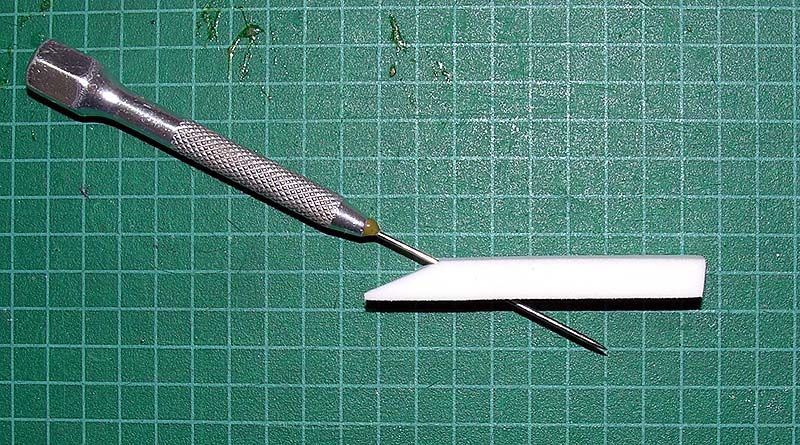
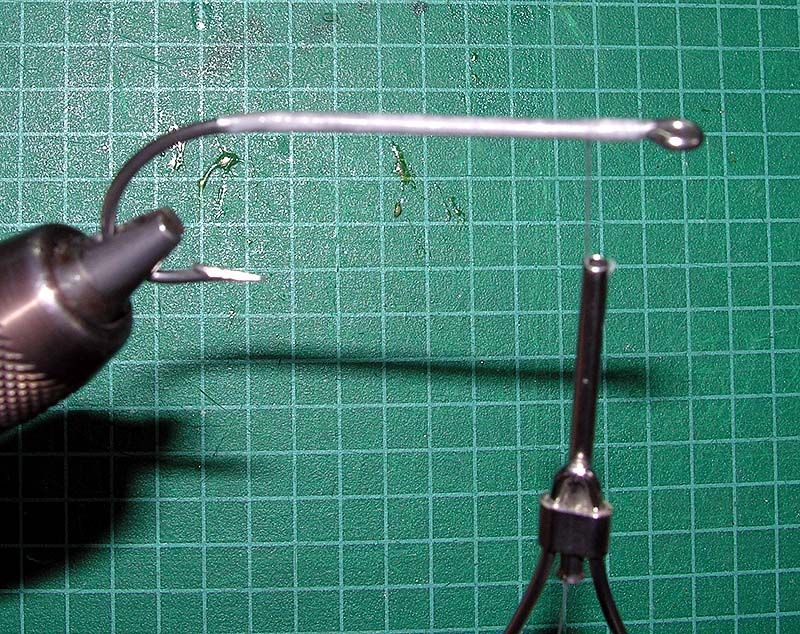

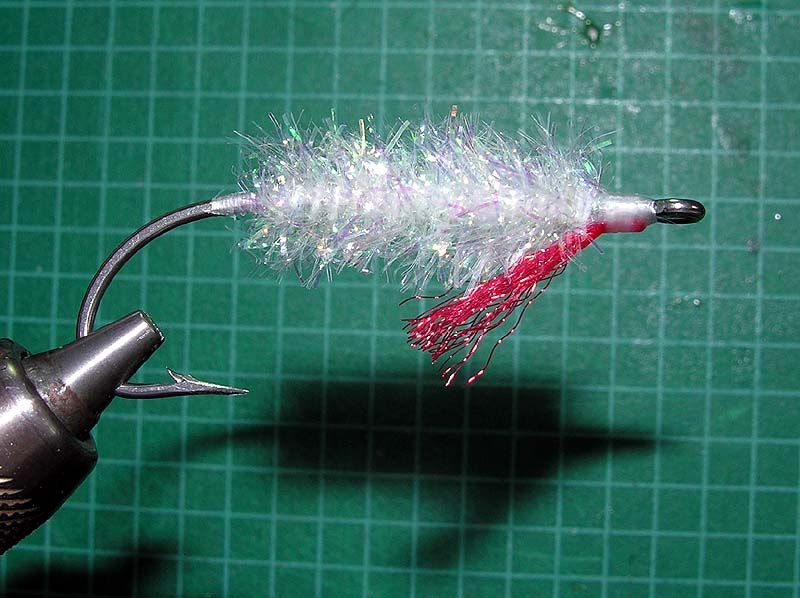
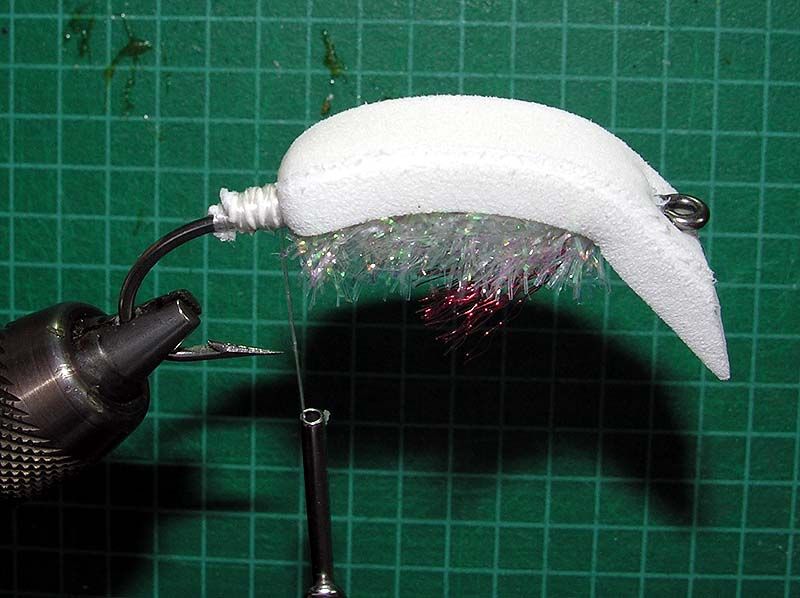
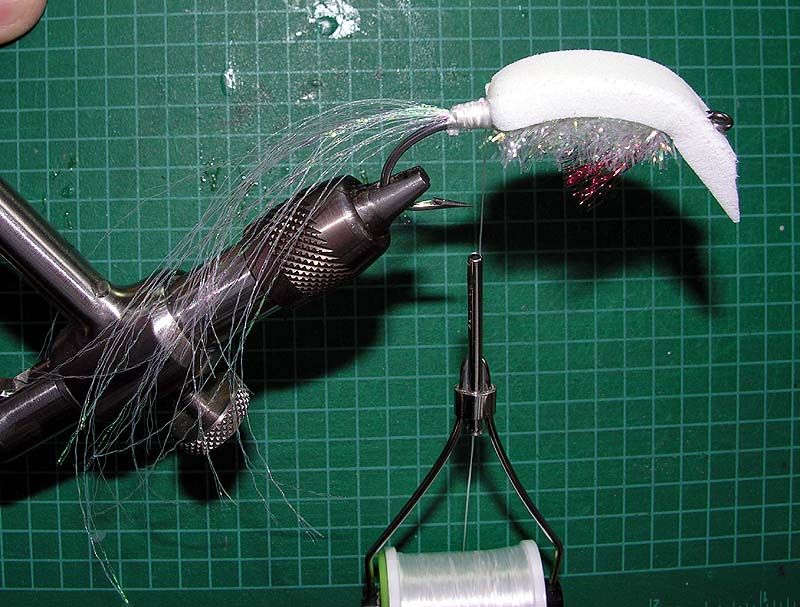
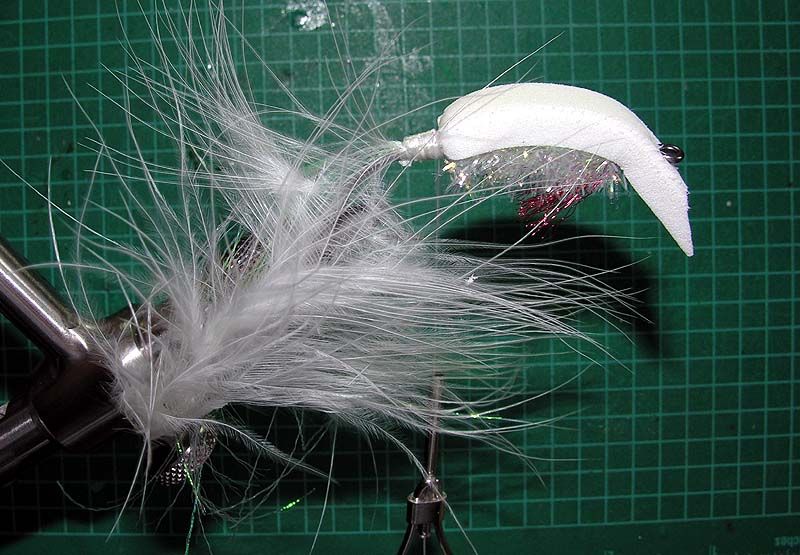
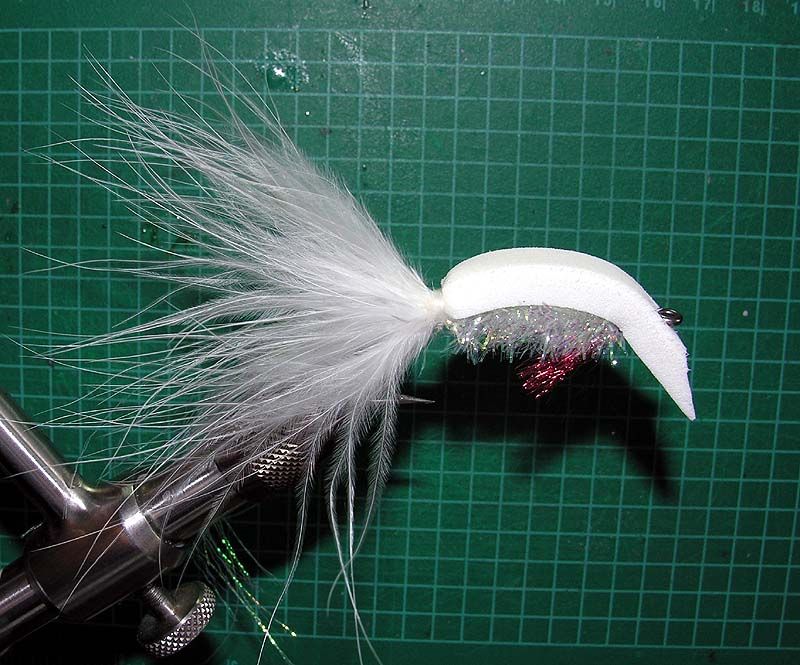

 Reply With Quote
Reply With Quote






Bookmarks